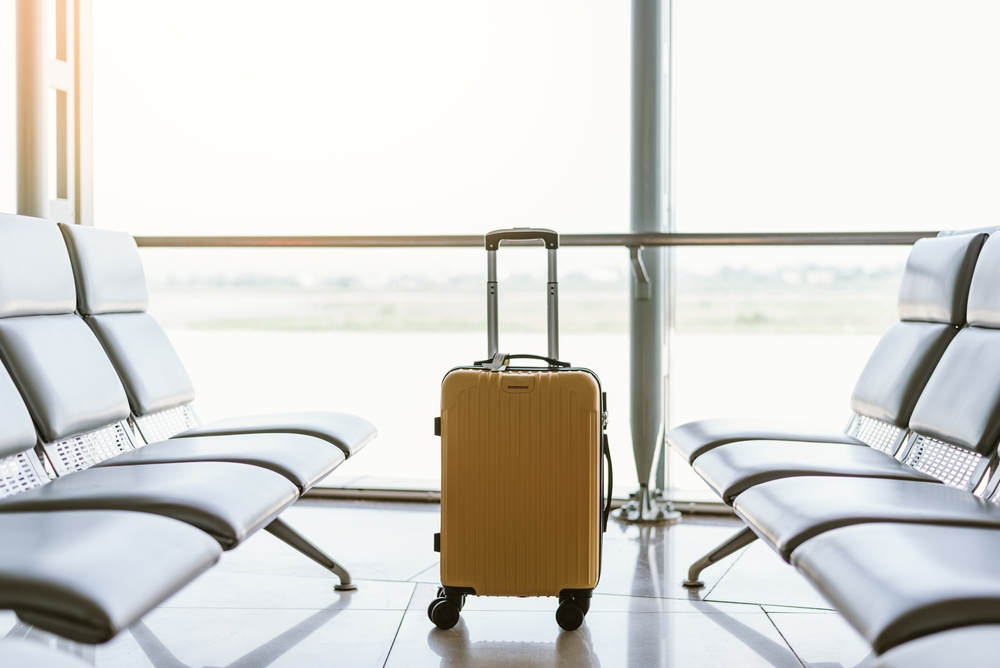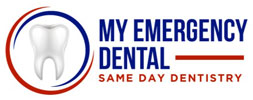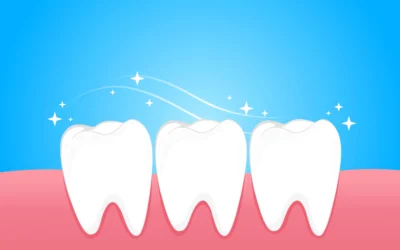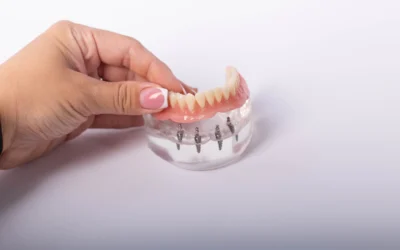Dental tourism has been growing in popularity in recent years, becoming a trendy new way to access affordable dental care in developing countries. There are plenty of reasons why someone might want to embark on a journey for dental tourism, but it’s equally important to learn the potential consequences and unusual complications that go along with it.
This article will explore the pros and cons of dental tourism, sharing the most important things to know if you’re thinking of taking a trip. Dental tourism can turn out to be an unforgettable experience, but the journey will definitely go smoother if you come prepared.

The Pros of Dental Tourism
The market for dental tourism is expected to grow 3x by 2031, with estimates suggesting that it could hit a $20 billion valuation in that year. Dental tourism is growing in value for good reason — several warm vacation destinations that have rich local culture have invested significantly into their dental infrastructure, providing tourists with quality, cost-effective options abroad.
Here are the top 3 pros for dental tourism.
1. Cost Savings
One of the primary advantages of dental tourism is the significant cost savings compared to dental procedures in the United States. The cost of dental services in popular dental tourism destinations is substantially lower due to several factors, including lower cost of living locally, favorable exchange rates, and reduced labor costs.
With the influx of dental tourists, clinics in popular destinations compete for patients by offering competitive pricing and attractive package deals. Dental tourists can also save money on insurance and malpractice costs, with many opting to pay out-of-pocket for their dental treatments instead of relying on insurance coverage in their home country.
By paying directly for dental services abroad, patients can avoid high deductibles and co-payment costs typically associated with dental insurance plans in their home countries. Expensive procedures like dental implants or full mouth restorations can also quickly exceed coverage limits for dental insurance plans, so paying directly for treatment abroad can represent a more cost-effective way to get it done.
Not only can dental tourists access cost savings in terms of their procedures, but the affordable cost of living in dental tourism destinations provides lower accommodation costs and affordable transportation as well. Coupled with cost-effective leisure activities, dental tourists can take advantage of local prices to embark on an enjoyable trip abroad without breaking the bank.
2. Access to Quality Dental Care
Some of the best dental tourism destinations have invested in state-of-the-art dental clinics, staffed by highly trained dentists to cater to the growing demand for dental tourism. Destinations like Costa Rica, Mexico, and Thailand have adopted cutting-edge technology to provide quality dental care that meets international standards.
Dental tourists can expect to find clinics equipped with the latest dental technologies, such as digital X-rays, CAD/CAM systems for restorations, laser dentistry, and advanced diagnostic tools. As well as this, dental tourism destinations often attract experienced and skilled dentists from around the world, with many of these dentists receiving advanced training and certifications from renowned institutions.
Top dental clinics in these destinations often adhere to guidelines from the World Health Organization (WHO), the International Organization for Standardization (ISO), and other key dental associations. As a result, many have received national and international accreditations, which are awarded based on stringent evaluations of the clinic’s facilities, equipment, staff qualifications, and overall adherence to quality standards.
The Joint Commission International (JCI) is a leading international organization that accredits healthcare facilities globally, providing one of the most sought-after accreditations for dental clinics in popular destinations. People seeking to pursue dental tourism may want to look out for accreditation from the JCI before choosing a clinic, as it signals strong expertise and quality assurance.
3. Combination of Treatment and Travel
Combining dental treatment with a memorable travel experience is a significant factor that can influence someone’s decision to pursue dental tourism. Not only do popular destinations for dental tourists represent a cost-effective vacation option, but they are also found in warm climates with plenty to see and do — meaning they’re a great place to relax while patients recover from treatment.
Destinations like Costa Rica, Mexico, Thailand, or Turkey offer rich experiences and unique local traditions that can allow dental tourists to immerse themselves in culture. From beachside resorts to mountain towns, tourists can receive dental care in scenic locations, explore local attractions, and have an overall experience that is pretty unforgettable.
Some dental clinics offer extended stay packages or partnerships with local resorts, allowing patients to combine their dental treatment with an extended vacation. While the primary motivation for dental tourism may be the cost savings on dental procedures, the added benefit of combining treatment with a travel experience can boost overall satisfaction and make dental tourism extremely appealing.

The Cons of Dental Tourism
It’s not always sunny on a trip for dental tourism, as storm clouds can brew and ruin the trip entirely. We don’t just mean in terms of the weather, either. Patients from first-world countries can sometimes lack an understanding of local healthcare regulations, and malpractice can result in costly legal processes that sometimes come to nothing.
Here are the top 3 cons of dental tourism.
1. Travel and Logistics
While it can certainly be an enjoyable experience, traveling abroad for dental treatment comes with its own set of challenges. With destinations located on different continents, patients often need long-haul flights from the US. This can be physically taxing and requires coordinating flight times with scheduled dental appointments, which isn’t always easy.
Patients also need to find good accommodation near the dental clinic, and they may be required to have an extended stay to avoid any post-treatment complications. This can involve taking time off work and extra costs, which can be a major drawback when comparing dental tourism to treatment at home.
Navigating a new city while recovering from dental procedures can also be challenging, especially if the patient is dealing with discomfort or mobility issues. In the event of complications arising from dental treatment, it’s crucial to visit appropriate healthcare facilities. This requires communicating through language barriers and navigating a foreign healthcare system, which can be unsettling without prior experience.
Cultural and language differences can make it harder for dental tourists to understand their rights as well. Each country’s healthcare system, including relevant regulations and legal frameworks, is largely very different. Because of this, patients should familiarize themselves with local customs while researching popular dental tourism destinations.
2. Risks and Concerns
The lack of familiarity with dental clinics in foreign countries can pose significant challenges. Patients need to thoroughly verify the credentials and qualifications of dentists, in terms of both dental education and licensing requirements. Since these can vary across countries, it’s often difficult for patients to accurately assess dentists in foreign clinics.
Another reason why patients can find it difficult to gauge the quality and standards of care in popular destinations is that they are not familiar with the local regulations. Dental practices in these destinations are governed by different regulations, and there can be a lack of trusted reviews that can shed more light on patient satisfaction.
Patients are required to learn about regulations that govern foreign healthcare systems, where legal rights are often less stringent than at home. In the event of malpractice, dental tourists may face challenges in seeking legal aid. This can include limited recourse and reduced chances of receiving a settlement of any kind.
Similarly, if a complication arises after returning home, patients face jurisdictional challenges in pursuing legal action. Since the dental clinic operates in another country, the patient would need to coordinate with a lawyer across national borders, languages, and legal systems. Not only can this involve significant legal fees, but the discrepancy between legal systems can also result in a lack of compensation.
3. Continuity of Care
Ensuring continuity of care after returning home can be difficult, as the dental team abroad may not have direct communication with the patient’s local healthcare providers. If complications arise or specialized follow-up care is required, then accessing appropriate dental specialists in the patient’s home country may be challenging — especially if the procedures were complex.
Similarly, undergoing dental procedures abroad can lead to a lack of consistent dental records and treatment history. Without access to accurate dental records, both the dentist abroad and the dentist at home lack a comprehensive understanding of the patient’s dental health. This can lead to missed diagnoses, inappropriate treatment plans, or other complications.
As well as this, dental records serve as legal documentation which can be crucial in claiming malpractice insurance. To mitigate against these challenges, dental tourist should request copies of their dental records from the clinic abroad and ensure they are complete, accurate, and transferable to their local dentist.

Making an Informed Decision
When researching reputable clinics in popular dental tourism locations, it’s crucial to know what to look out for. Patients should always look for clinics that are accredited by national or international organizations, with the Joint Commission International (JCI) being a strong signal of quality and expertise.
Additionally, patients should also research the educational backgrounds of the dentists at the clinic. Qualifications from globally renowned institutions are often some of the best indicators, showing that the expert is truly of international quality. The best dentists abroad often have qualifications from universities in the United States and Europe.
Finally, make sure to read online reviews and testimonials from previous dental tourists to gain insights into their experiences. Learning more about the quality of care and overall satisfaction from others who embarked on a similar journey can be extremely helpful, and any negative reviews about certain locations should help you avoid the same mistakes.
Destination Spotlight: Costa Rica
Costa Rica has emerged as a popular dental tourism destination for a variety of reasons. The country has made significant investments in its dental infrastructure, providing patients with access to modern clinics and highly trained dentists. Many Costa Rican dentists receive their education from reputable institutions in the United States and Europe, and the country has a strong focus on implementing international standards of care.
The cost of dental procedures in Costa Rica can be significantly lower than in the United States. For example, the cost of receiving a full acrylic is estimated to be $640 on average, while the same treatment in the United States can cost more than $2,000. Usually, costs range from 50% to 70% lower in Costa Rica when compared to the US.
Despite having lower prices, Costa Rica provides state-of-the-art dental treatment to patients from all over the world. Clinics are typically equipped with the latest technologies, leveraging advanced diagnostic tools and computer-aided manufacturing systems to provide precise restorations. Clinics are required to adhere to strict international standards for sterilization, infection control, and patient safety — so, compromising on price does not equal a compromise on quality in the case of Costa Rica.
How to find reputable dental clinics in Costa Rica
Costa Rica is home to many reputable dental clinics. Below, we’ve listed three great options that have obtained accreditations and certifications from renowned organizations.
Goodness Dental
Goodness Dental is accredited by the Joint Commission International (JCI) and it is a member of the American Dental Association (ADA). The clinic has two dental offices in Costa Rica — San Jose and Escazu respectively.
Sonria Dental
Accredited by the Dental Tourism Association, Sonria Dental is a well-trusted brand for dental tourists. The clinic is a member of the American Academy of Cosmetic Dentistry (AACD), and is certified by the International Congress of Oral Implantologists (ICOI). It has one location in San Jose.
Costa Rica Dental Team
Costa Rica Dental Team is accredited by the Dental Tourism Association, a member of the AACD, and certified by the ICOI. It has two locations, one in Escazu and one in Jaco Beach, providing a popular and highly trusted practice for tourists seeking dental treatment.

A Final Word
Dental tourism can be an unforgettable experience owing to the combination of treatment with a vacation abroad. However, it’s not always smooth sailing and patients can find themselves in plenty of trouble if they don’t go prepared.
While dental tourism can involve cost savings without sacrificing quality, challenges such as maintaining continuity of care and navigating a foreign healthcare system can pose a risk. Within this context, patients must carefully evaluate their options and make an informed decision before they embark on their journey.
Reach out to My Emergency Dental today for a consultation. We can share key information about dental tourism and help you make the best possible choices — whether you’re considering getting treatment at home or abroad.



